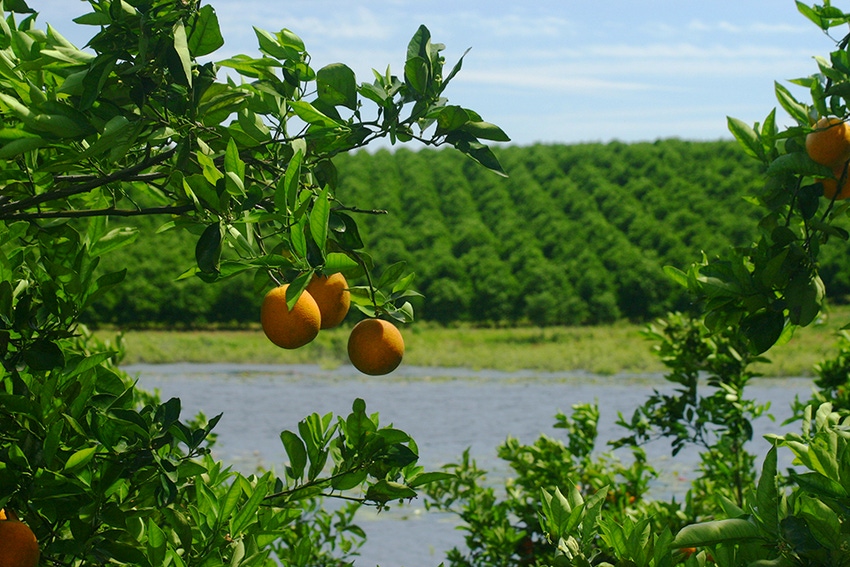
By using drone technology, Florida citrus growers can find out how many trees live in their groves and, eventually, they may detect the health status of the citrus plants, a new University of Florida study shows.
Imaging from unmanned aerial vehicles (UAVs) can accurately detect and count citrus trees and spaces where trees have had to be removed in groves, said Yiannis Ampatzidis, an assistant professor of agricultural and biological engineering. This technique would save growers time, money and labor costs. It also lets growers know how many trees they must order from nurseries so they can replant.
The system also can be used to evaluate citrus varieties and rootstocks by detect tree traits that citrus breeders would want to know about, Ampatzidis said. Those include tree traits that produce healthy and tasty fruit and a higher yield.
Eventually, researchers with the UF Institute of Food and Agricultural Sciences hope to use the UAV images to detect citrus tree traits that would lead to quicker diagnoses of heat stress and pest diseases, including the deadly citrus greening disease. That disease is causing perilous damage to a multibillion dollar-a-year citrus industry.
For the new research Ampatzidis and his colleagues attached an imaging mechanism to a UAV, and it accurately detected citrus trees and gaps between trees in a grove in Hendry County, Florida. Because many citrus trees are damaged or die from citrus greening disease, farmers have to remove the plants from their groves. That tree removal causes gaps between trees.
“This is the very first step toward developing an individual tree analysis,” said Ampatzidis, a faculty member at the UF/IFAS Southwest Florida Research and Education Center in Immokalee, Florida. “Growers need to know the number and location of tree gaps in order to order and replant new trees. They need to know problematic areas and weak trees.”
The drone technology should also help citrus growers deal with new agriculture insurance policies that require detailed information about each grove, he said. For example, most insurance firms want to know the number of trees in each field, so growers need to accurately report that.
Right now, farmers try to manually measure the number of trees in their groves, said Ampatzidis, who works with several growers trying to address these issues. Those growers say other UAV-based systems are not as accurate as the UF/IFAS-developed UAV-based sensing system.
“We flew in a field with about 5,000 trees and failed to detect only eight to 10 trees,” he said. Other systems growers had used failed to detect more than 500 trees, Ampatzidis said.
Collecting citrus data manually is extremely time consuming, labor-intensive and costly, Ampatzidis said. For example, in a recent study with 50 rootstock varieties and 5,000 trees, scientists had to collect data about traits such as tree size and height, tree stress and more tree by tree. To do so, they must measure the size and height of every tree with measuring tapes or poles, which take a lot of time, he said. In collaboration with Ute Albrecht, an assistant professor at the UF/IFAS Southwest Florida REC, Ampatzidis is developing a UAV-based high throughput system to automate this data collection procedure.
The new UF/IFAS research is published in the journal Remote Sensing.
Source: The University of Florida, which is solely responsible for the information provided and is wholly owned by the source. Informa Business Media and all its subsidiaries are not responsible for any of the content contained in this information asset.
About the Author(s)
You May Also Like




